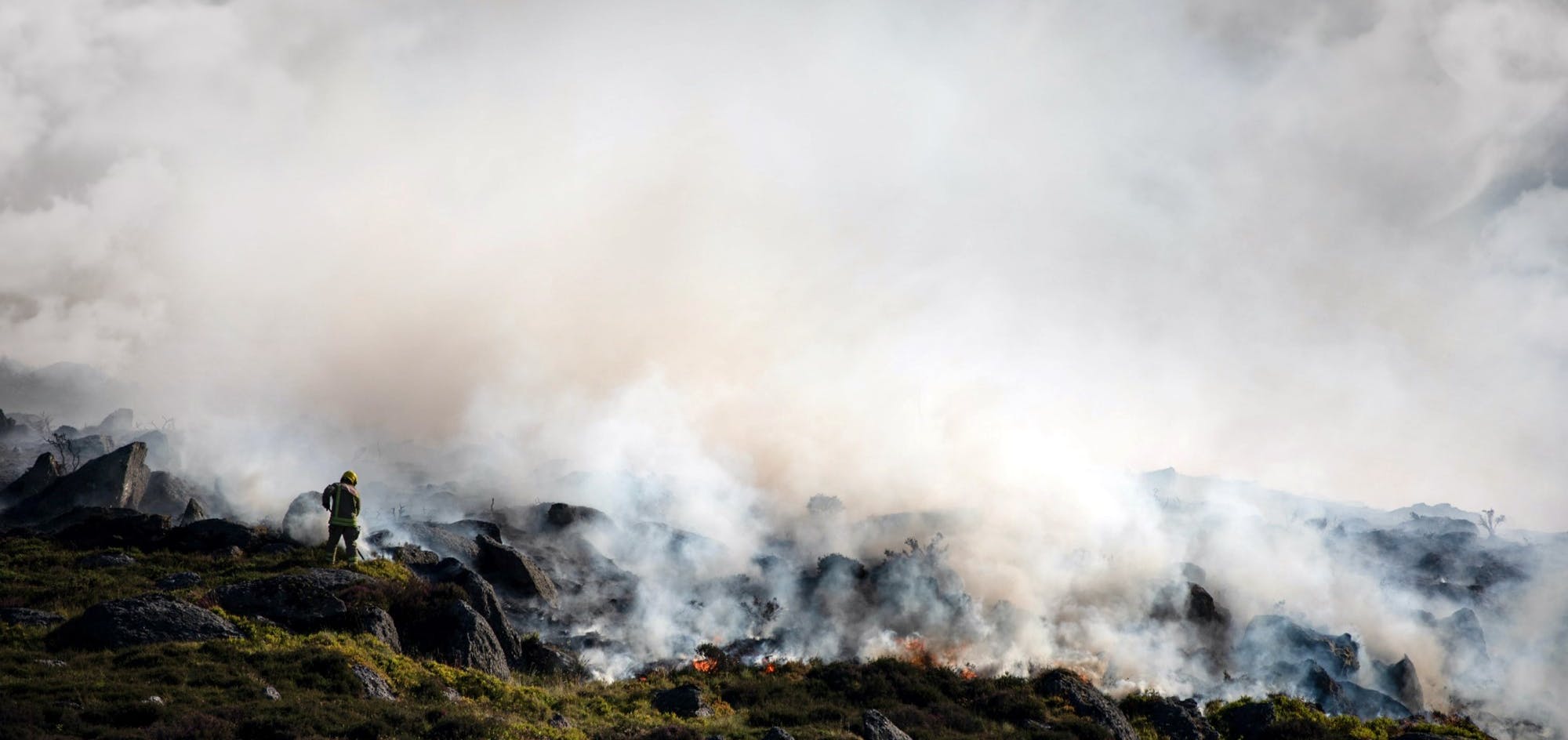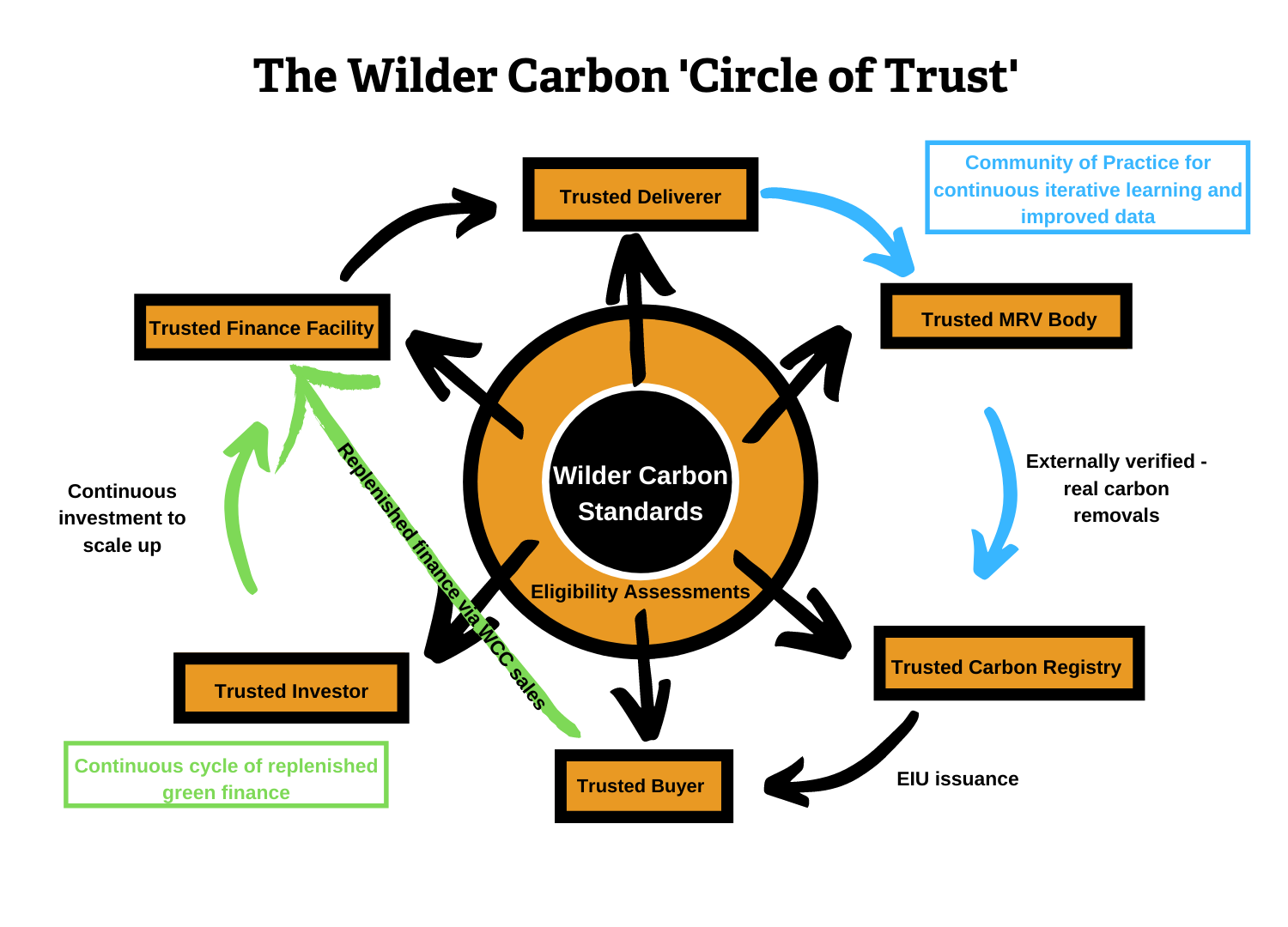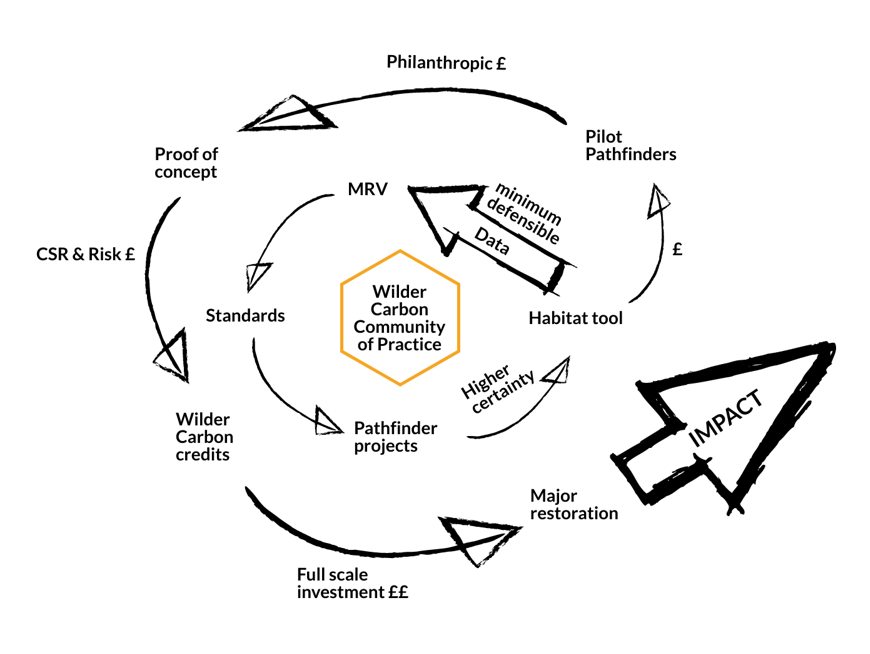
Our Wilder Carbon Journey so far...

Sarah Brownlie Wilder Carbon Project Manager
The Challenge
The climate and nature crises are here, now, and there is no time to wait to take action. The Wilder Carbon project concept was derived from wanting to act now, before it’s too late, in the best way possible.
The second biggest threat to nature is climate change, the first is habitat loss. And, climate change is made worse by loss of nature.
We therefore know that these crises must be tackled at the same time and that it’s critical to develop mechanisms to restore UK nature at a massive scale now.
We also have a community in conservation organisations in the UK that are trusted by their members and donors to safeguard wildlife sites for the long term. It now turns out that these sites have also been locking up substantial amounts of carbon. These organisations would love to be able to do more of the same but they need the money to pay for it in the long-term if they’re to avoid taking on potential liabilities that they might not be able to afford.
At the same time many UK businesses don’t want to engage in 'tokenistic tick-box offsetting' but desperately want to do something about their carbon emissions whilst they take the action required to reduce these. They also want to be able to go and see the projects they’ve invested their money in. And, they care about nature as well as climate, so they want to get the best of both worlds.
Linking these two communities together to enable the large-scale restoration of the UK’s nature in the name of climate and nature is what Wilder Carbon is all about. It is challenging traditional offsetting. And, it is more meaningful than cookie-cutter tree planting. It is what we need to do.
This is a technically, legally, and politically complex but vital undertaking. We can’t do it alone.
Wilder Carbon has only been a year in the making at Kent Wildlife Trust. The amount of learning, innovation, and development that has taken place in this short time, and despite Covid, is credit to the determination, collaboration and resilience of the team and their work with The Wilder Carbon Board, the Trusted Deliverers and our Technical Standards Board who have all committed to the principles and goals of Wilder Carbon.

The Wilder Carbon Initiative
Our few remaining good quality native habitats help fight climate change by keeping atmospheric carbon locked up. Peatlands, salt marsh and woodlands are known for this, but degraded wetlands, species-rich grassland and wood pasture also have significant, untapped potential.
All of these habitats can be restored through ‘wilding’ (the restoration of large areas of native habitat through re-establishment of natural processes) to lock up more carbon and provide space for more nature.
Wilder Carbon is an evolving mechanism to harnesses private capital via removal offsets and make large areas of the UK ‘wilder’, challenging traditional offsetting whilst establishing Wilder Carbon as:
- the benchmark for native habitat restoration projects that address the nature and climate crises at the same time.
- the mechanism for restoring landscapes made up of multiple-habitats using one system to avoid unnecessary complexity.
- being applicable at scale: from national to regional; from Local Authority landholdings to farms, rewilding projects, protected areas, and urban greenspace.
- the way to leverage green financing in a truly defensible manner that results in real carbon removal offsets.
As the Financing Nature Recovery UK report of late 2020 observed: we must use the best possible data in the best possible way to pilot Carbon + projects now, whilst assuring potential investors and stakeholders that they can trust us.
The Wilder Carbon Standards draw on high integrity principles for carbon, biodiversity and - critically – buyer-ethicality to do this.

Our Carbon + Habitat Tool
Acknowledging the lack of a flexible tool that can cope with multiple habitats and varying carbon data, we created the Carbon + Habitat Tool. This uses the best available carbon storage data for UK habitats to generate minimum defensible carbon sequestration estimates and biodiversity uplift estimates.
The Carbon + Habitat Tool is designed to be continually improved as good quality data emerges via the literature and from monitoring our Pathfinder Projects.
Pathfinder Projects
Our pipeline of Pathfinder Projects includes both Pilot Delivery Projects in habitats where minimum carbon data requirements are met, and R&D Projects where it isn’t.

Wilder Carbon Community of Practice
Our Standards are being developed by an independent expert Board with V1 anticipated for public release in Autumn this year to provide assurance on key issues like additionality, permanence and buyer ethicality linked to achieving real carbon removals in anticipation that this is the way the market will develop as the voluntary market morphs towards a more compliance-driven market.
Our pathfinder projects rest on ‘Trusted Deliverers’ who already protect nature across the UK and have unparalleled track records in long-term safeguarding of wildlife habitats that lock up carbon, as well as working with other landowners and local communities.
Our Monitoring, Reporting and Verification (MRV) will be delivered by independent partners from the academic and auditing communities.
All these groups plus our financial partners, with whom we are working on establishing a dedicated Finance Facility, form the Wilder Carbon community of practice with whom we will test and improve the tools, mechanisms and standards.

We don't profess to have the answers to everything, nor the solutions to fix the problem world-wide. But we do believe we have the mechanisms in place to START DOING SOMETHING about it NOW
Join the Wilder Carbon Circle of Trust and be part of the solution to tackle the nature and climate crises now, before its too late. Fight the crises, invest in nature!!!